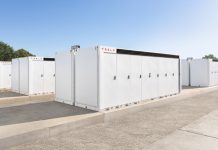In this European energy policy focus, Jan Dirx, Rapporteur for the EESC opinion on Electricity market reform, advocates for liberalisation and regulation where appropriate
Energy prices, which had already risen, increased more quickly after the outbreak of Russia’s war on Ukraine; the war affected the prices of fossil fuels, especially gas, with the resulting increases subsequently affecting electricity prices and thus ending up on the bills of consumers and businesses.
This has highlighted that the existing electricity market structure cannot keep electricity prices manageable.
Reform of the EU electricity market
The European Economic and Social Committee (EESC) has long warned against this and called for the EU electricity market reform for some time.
The European Commission responded to the urgency of price increases by publishing a legislative proposal “to reform the EU’s electricity market design to accelerate a surge in renewables and the phase-out of gas, make consumer bills less dependent on volatile fossil fuel prices, better protect consumers from future price spikes and potential market manipulation, and make the EU’s industry clean and more competitive”. (1)
The EESC welcomes this proposal as a first step in the right direction: the energy system of tomorrow should, in particular, be decarbonised, based on renewable and carbon-free energy sources, and centred on consumers. At the same time, we are convinced that the Commission will need to take further steps in the coming years, as the electricity market is in the middle of a paradigm shift.
Indeed, the current market has been based on large fossil-fuel producers. In contrast, the future market will combine large renewable energy producers (mainly sizeable offshore wind farms) and many small renewable energy producers (especially solar energy).
The EESC has included some more far-reaching proposals in its opinion on the reform of the European electricity market. (2) In brief, these proposals are as follows: our premise is that energy should not be treated as a typical commodity such as coffee or steel. It is a critical element of public service.
It is, therefore, necessary to set up a regulatory framework for future energy that guarantees an environmentally friendly, affordable and reliable energy supply and the right to energy. This framework will become a hybrid market force and governmental management model, with the motto “liberalisation where possible, regulation where necessary”
A government-created “E-facility”
At the core of this hybrid model is a government-created “E-facility” that purchases electricity from generators and sells it to household customers, SMEs, citizen energy communities and large consumers, and other countries, where appropriate and possible. The three objectives mentioned (sustainability, affordability and security of supply) will serve as a framework for decision-making.
The “E-facility” will conclude long-term contracts with electricity producers based on tenders. These contracts will be of various types, such as power purchase agreements (PPA), contracts for difference (CfD), and cost+ contracts. The long-term contracts concluded by the facility ensure an acceptable price guaranteed by the state for end-users and investment security for producers.
Empower consumers in the EU
The Commission seeks to empower consumers in the EU and to place them at the centre of the policy by giving them the right to share renewable energy directly. The EESC fully supports this approach. We are, therefore, pleased that under the Commission’s proposal, consumers can sell excess rooftop solar electricity to neighbours.
The EESC considers that the market must also be organised to enable consumers who generate their own electricity (prosumers and renewable energy communities) and other small market participants to benefit as much as possible from the electricity they generate, even if they feed it into the grid. One example of how to offer this possibility to small producers is through an “electricity bank”.
An electricity bank might work as follows: with solar panels on your roof, they produce more than you consume that day on sunny days. You deliver this excess electricity via the grid to the distribution company with which you have a contract.
The company can read how much electricity you have supplied via your smart meter, and this amount will partly (perhaps between 70% and 90%, depending on how much you supply to the grid) be credited to your kWh account. The crediting of only part of the electricity you supply is necessary to cover the costs and risks the distribution company bears.
On another occasion, you may need to get electricity from your provider, for example, for your own household, or to charge your car battery at a charging station using a charging card from your electricity provider. The kWh on your account will be written off first, and you will not pay for it. For any further kWh you buy, you will pay the price stipulated by your contract with the electricity company.
References
- https://ec.europa.eu/commission/presscorner/detail/en/IP_23_1591
- Opinion on Electricity Market Reform (https://www.eesc.europa.eu/en/our-work/opinions-information-reports/opinions/electricity-market-reform)













